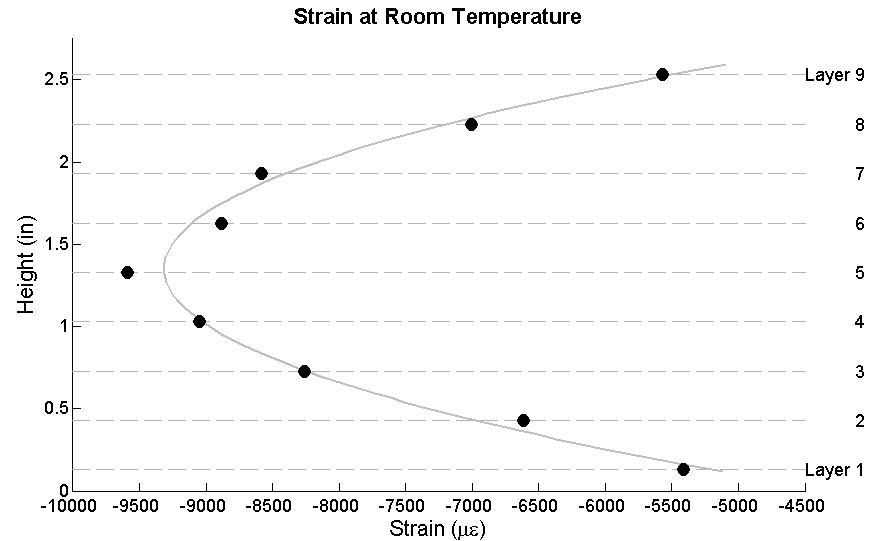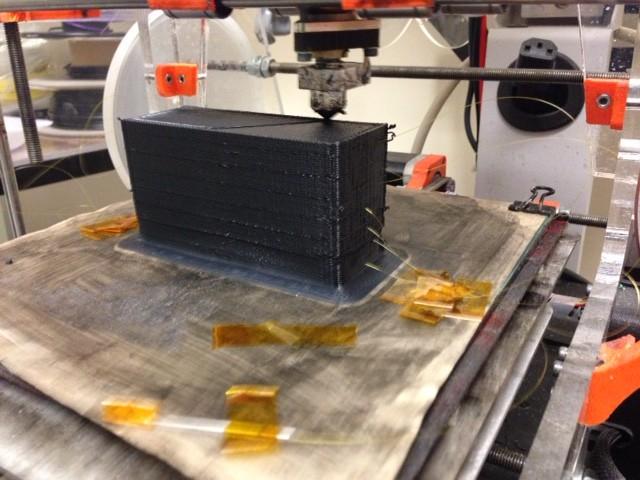It seems these days that when speaking of 3D printing, it is nearly compulsory to use the words ‘revolution’ and ‘paradigm shift.’ While it is true that 3D printing has changed much in the manufacturing landscape, with great power comes great responsibility. As an increasing number of parts both decorative and structural are created using 3D printing, the need to understand the nature of the stresses and their impacts on those parts continues to grow.
 Not content with after the fact knowledge gained from accidents or failure, the people at Luna Innovations have worked to create a mechanism for measuring strain on complex surfaces. In particular, Luna’s process works to measure the residual strain in a component that is a result of the 3D printing process itself. As the team at Luna explained on their site:
Not content with after the fact knowledge gained from accidents or failure, the people at Luna Innovations have worked to create a mechanism for measuring strain on complex surfaces. In particular, Luna’s process works to measure the residual strain in a component that is a result of the 3D printing process itself. As the team at Luna explained on their site:
“The growing penetration of additive manufactured parts into structural components along with an ever expanding range of available materials are combining to make traditional test methods completely inadequate for validating designs of additively manufactured components. In particular is the problem of internal residual stresses that can accumulate during the buildup of material during the printing process. Residual stress can cause layer delimitation, part distortion and cracking and are a significant barrier to the wider adoption of additively manufactured parts in structural applications.”
 The contribution that Luna is making to this problem is through a sensor that can be embedded during printing and actually measures the strain from the inside of the component. The sensor itself, a fiber optic sensor with a 155 micrometer diameter, is so diminutive as to have no impact on the characteristics of the component and yet can relay vital information about the residual stresses experienced.
The contribution that Luna is making to this problem is through a sensor that can be embedded during printing and actually measures the strain from the inside of the component. The sensor itself, a fiber optic sensor with a 155 micrometer diameter, is so diminutive as to have no impact on the characteristics of the component and yet can relay vital information about the residual stresses experienced.
“Residual stresses and strains accumulate in the 3D printing fabrication process during the build-up of material and can have a significant and detrimental effect on the mechanical strength of a part. These residual stresses can couple additively to stresses from external loading, resulting in unexpected or premature failure…The ODiSI high definition fiber optic sensing system when used in conjunction with this iterative process optimization can ensure parts built with additive manufacturing not only meet the design requirements, but can be built in volume production with a known and consistent process capability for critical parameters.”
 In order to test the efficacy of their newly developed ODiSI system, the research team 3D printed a block in ABS with 3″ x 4″ x 1.5″ dimensions. At several points through the process of printing the block, the printing was paused, the head lifted, and a section of fiber was embedded. Measurements were taken both during the process of printing and once the component had cooled that demonstrated a greater amount of residual strain near the center of the block.
In order to test the efficacy of their newly developed ODiSI system, the research team 3D printed a block in ABS with 3″ x 4″ x 1.5″ dimensions. At several points through the process of printing the block, the printing was paused, the head lifted, and a section of fiber was embedded. Measurements were taken both during the process of printing and once the component had cooled that demonstrated a greater amount of residual strain near the center of the block.
“If 3D printing is truly going to revolutionize manufacturing…then paving the way will be equally revolutionary methods to test and validate these rapid advancements in 3D printing technology. The accumulation of residual strains and stresses need to be controlled in order to maintain design integrity, reliability and quality. Luna’s ODiSI system, with its ability to embed sensors and provide high definition strain measurements is the perfect solution.”
Let us know what you think of this method in the Measuring Residual Stresses forum thread over at 3DPB.com.
Subscribe to Our Email Newsletter
Stay up-to-date on all the latest news from the 3D printing industry and receive information and offers from third party vendors.
You May Also Like
3D Printing Financials: Fathom Struggles in Financial Quicksand During Critical Transition
Facing a year of key transitions and financial pressures, Fathom (Nasdaq: FTHM) has filed its annual report for 2023 with the U.S. Securities and Exchange Commission (SEC). The document outlines...
Latest Earnings Overview for Australian 3D Printing Firms Titomic and AML3D
Australian 3D printing manufacturing firms Titomic (ASX: TTT) and AML3D (ASX: AL3) reported their financial results for the period from July to December 2023, marking the first half of their...
3D Printing Webinar and Event Roundup: April 7, 2024
Webinars and events in the 3D printing industry are picking back up this week! Sea-Air-Space is coming to Maryland, and SAE International is sponsoring a 3D Systems webinar about 3D...
3D Printing Financials: Unpacking Farsoon and BLT’s 2023 Performance
In the Chinese 3D printing industry, two companies, Farsoon (SHA: 688433) and Bright Laser Technologies, or BLT (SHA: 688333), have recently unveiled their full-year earnings for 2023. Farsoon reported increases...































